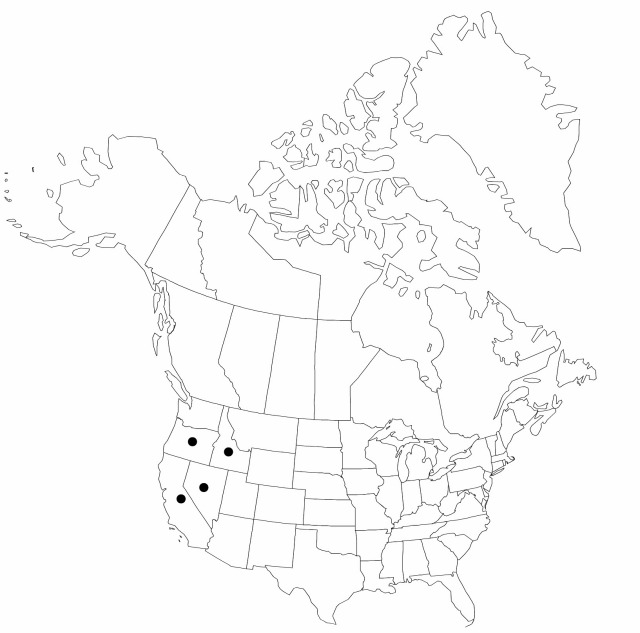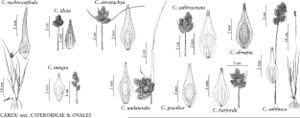Carex abrupta
Bull. Torrey Bot. Club 43: 618. 1917.
Plants densely cespitose. Culms 18–66 cm. Leaves: sheaths adaxially white-hyaline, often tinged brown distally, summits U-shaped or rounded, sometimes prolonged beyond collar; distal ligules 1–3(–4.5) mm; blades 3–6 per fertile culm, 10–30(–45) cm × 1.5–3.7(–4.9) mm. Inflorescences dense or open, brown and green, 1.2–2.2 cm × (6–)9–18 mm; proximal internode 1–3 mm; 2d internode 1–2 mm, these 2 internodes collectively less than 1/3 as long as inflorescences; proximal bracts bristlelike, shorter than inflorescences. Spikes 4–9, distinct or densely aggregated and individually indistinct, usually ovoid to broadly ovoid, 4.4–10.8 × 2.7–8.4 mm, base and apex acute to rounded. Pistillate scales red-brown or chestnut to coppery, with green, gold, or light brown midstripe, usually ovate, 2.4–3.9 mm, shorter than perigynia, width less than or equal to perigynia, margin white, 0–0.05 mm wide, apex obtuse to acuminate. Perigynia appressed-ascending to ascending-spreading, red-brown, coppery, or chestnut, conspicuously (5–)7–10-veined abaxially, conspicuously 3–8-veined adaxially, veins reaching top of achene, elliptic to lance-ovate, plano-convex to biconvex or, sometimes, flat around achene, (2.9–)3.6–5.4 × 1–2.1 mm, 0.4–0.5(–0.6) mm thick, margin flat, including wing usually 0.2–0.3 mm wide, often incurved adaxially, perigynia then boat-shaped, ciliate-serrulate on distal body; beak coppery or dark brown at tip, occasionally narrowly flattened, cylindric, unwinged, usually less than 1 mm, ± entire for 0.5–0.8 mm, abaxial suture usually with conspicuous white margin, distance from beak tip to achene (1.6–)2–2.3 mm. Achenes narrowly compressed elliptic to ovate-quadrate, 1.2–1.8 × 0.7–1.1 mm, (0.3–)0.4–0.5 mm thick.
Phenology: Fruiting summer.
Habitat: Moist mountain meadows and slopes
Elevation: 1400–3300 m
Distribution

Calif., Idaho, Nev., Oreg.
Discussion
Selected References
None.
